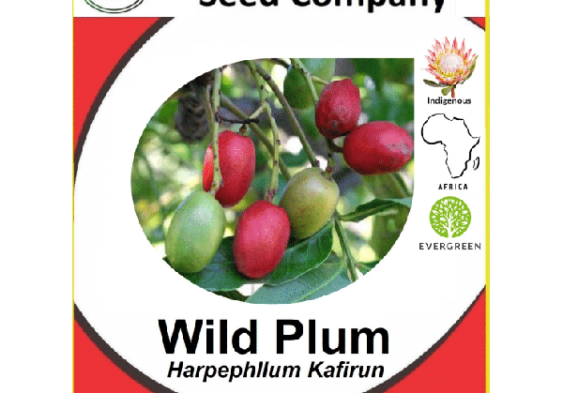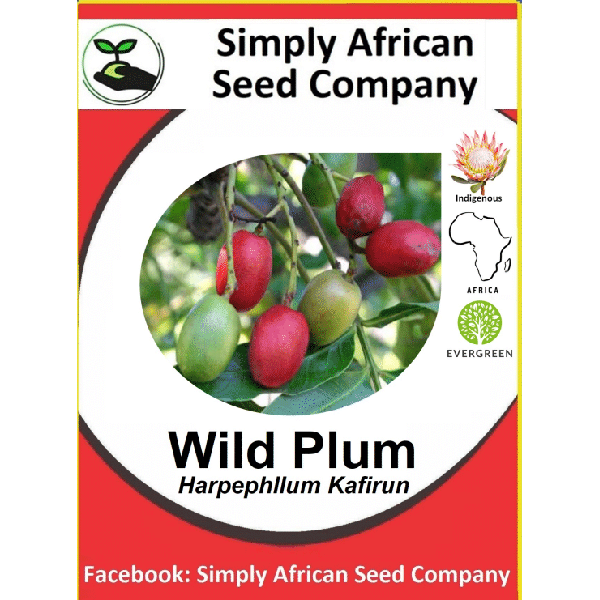Subtotal: R600.00
HomePlum Wild (Harpephyllum Caffru...


44 in stock
R30.00
Harpephyllum is a genus of trees in the family Anacardiaceae. The sole species is Harpephyllum caffrum, a dioecious evergreen species from South Africa and Mozambique that is also cultivated. The fruit is edible. One of the largest tree species indigenous to South Africa, the Wild plum is known as a forest giant in the forests […]
Harpephyllum is a genus of trees in the family Anacardiaceae. The sole species is Harpephyllum caffrum, a dioecious evergreen species from South Africa and Mozambique that is also cultivated. The fruit is edible.
One of the largest tree species indigenous to South Africa, the Wild plum is known as a forest giant in the forests of KZN and the Eastern Cape. The tree is often used in city parks and as a street tree in our coastal cities as it is evergreen and provides adequate shade.
Growing to a height of up to 15 m in optimal conditions, the Harpephyllum caffrum can often be confused with the Cape Ash (Ekebergia capensis) as both trees carry edible, plum-like fruits. However, the Wild plum can be distinguished by its sickle-shaped leaves that that are crowded towards the ends of branches. The foliage has a dark green, glossy appearance and the leaves are pinnate.
The main stem of the tree is clean and straight with branches that curve upwards and the canopy is thick and spreading. Flowering takes place from November to February and the greenish white flowers are borne near the tips of the branches. The fruit are fairly big and ripen from green to a bright red that is in startling contrast to the dark green foliage. The fruit is palatable to humans and animals and will attract many fruit-eating birds to the garden.
As a garden subject, Harpephyllum caffrum needs ample room to grow and would be suited to medium or large gardens. The root system can extend up to 4 m in older specimens and care should be taken when positioning the tree. When young, the Wild plum is slightly frost sensitive and needs adequate watering to flourish. This ornamental tree will attract birds and butterflies while providing ample shade in the garden.
Every seed variety undergoes organic cultivation and self-testing on our South African, Botswanan, Zambian, and Tanzanian farms. Our commitment lies in offering a diverse selection of organically grown, open-pollinated, Non-GMO seeds, proudly produced and acclimated locally.
Before planting, please verify the conditions in your area suitable for the specific seed type. Growth rates and germination times hinge on various factors like soil conditions, rainfall/watering patterns, climate, and more. The outcome of growth and harvest may be influenced by these conditions.

Every seed variety undergoes organic cultivation and self-testing on our South African, Botswanan, Zambian, and Tanzanian farms. Our commitment lies in offering a diverse selection of organically grown, open-pollinated, Non-GMO seeds, proudly produced and acclimated locally. Before planting, please verify the conditions in your area suitable for the specific seed type. Growth rates and germination times hinge on various factors like soil conditions, rainfall/watering patterns, climate, and more. The outcome of growth and harvest may be influenced by these conditions.